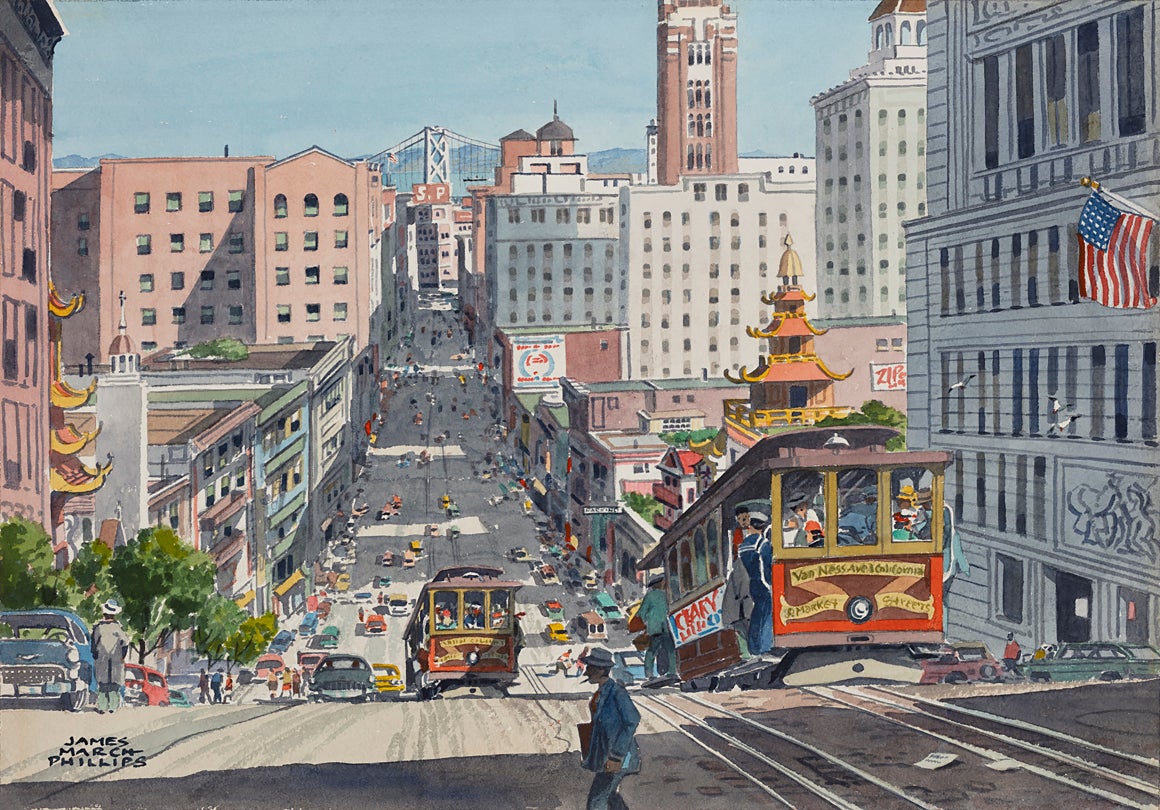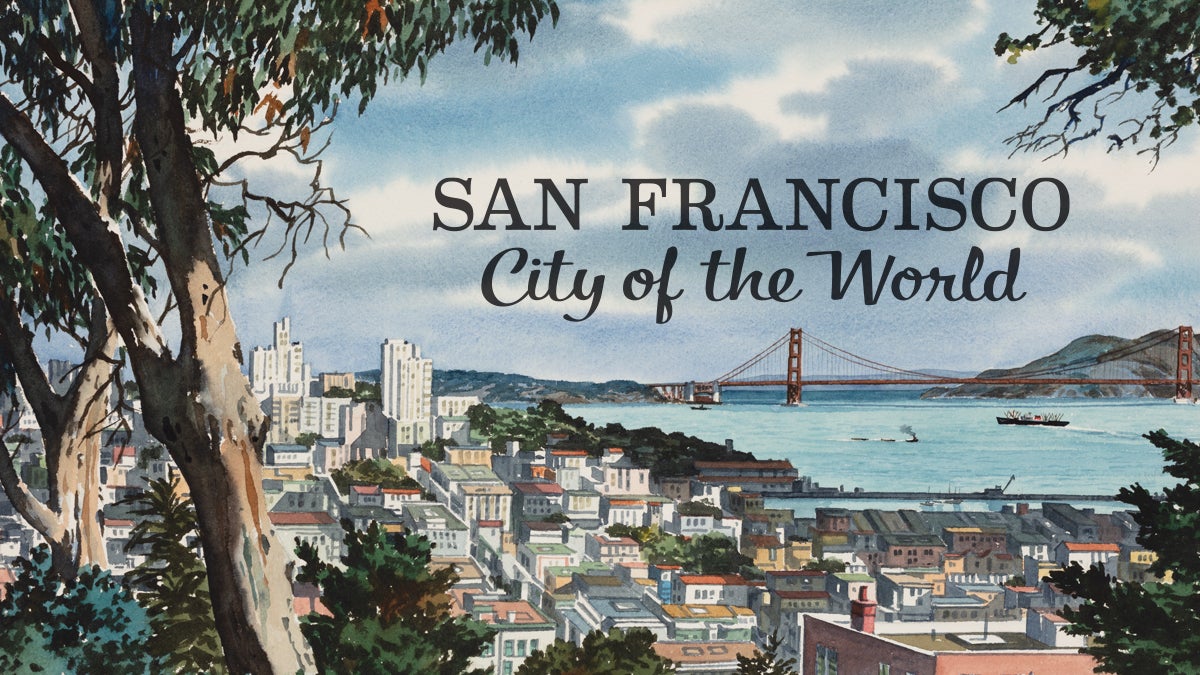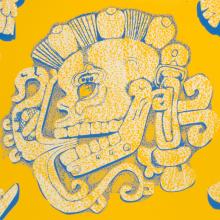San Francisco: City of the World
San Francisco: City of the World
San Francisco, the ancestral homeland of the Ramaytush Ohlone people, was founded in 1776 as a presidio and mission during Spanish occupation. By the time of the Mexican–American War in 1846, around one thousand people, mostly sailors, fishermen, whalers, and fur trappers, lived in the city. In 1848, gold was discovered in the Sierra Nevada foothills; the following year, more than seven hundred ships arrived in San Francisco. The Gold Rush transformed the region into a bustling city of approximately twenty-five thousand inhabitants, filled with makeshift tent-houses, hotels, saloons, and gambling halls. Thousands of Chinese immigrants came to San Francisco during the Gold Rush, soon establishing the oldest and largest Chinatown in California.
San Francisco flourished in the late nineteenth century. Plans for Golden Gate Park commenced in 1870, today one of the nation’s largest and most visited urban parks. Andrew Smith Hallidie (1836–1900) tested the first cable car in 1873 on Clay Street and public service began in September that same year. Built in 1894, Adolph Sutro’s (1830–98) magnificent Sutro Baths building accommodated up to ten thousand people. By the turn of the twentieth century, San Francisco was known as the “Paris of the West”—until a devastating earthquake in April of 1906 and its resulting fires leveled the city. 
San Francisco, however, quickly rebuilt. The city’s Japanese residents established Japantown in the Western Addition, where it remains today. During the late 1910s and 1920s, a burgeoning Filipino community formed Manilatown along Kearny and Jackson streets nearby Chinatown. As San Francisco restored its vibrancy, it celebrated by hosting the Panama-Pacific International Exposition (PPIE) in 1915. During these early decades, numerous San Francisco landmarks, such as Coit Tower (1933), were built. An engineering marvel, the construction of the Golden Gate Bridge—the most photographed bridge in the world—was completed in 1937 and followed by the Golden Gate International Exposition (GGIE) in 1939.
San Francisco has long served as a meeting ground for diverse groups and countercultures. The Fillmore District was home to a large African American population and lively jazz scene in the 1940s and '50s. Meanwhile, literary Beats flocked to North Beach’s City Lights Books. San Francisco’s Latinx residents began moving to the city’s Mission District in the 1950s, turning it into a vibrant Spanish-speaking enclave over the next several decades. The late 1960s welcomed the hippie generation, who would usher in the “Summer of Love” in 1967. Two years later, Indigenous activists occupied Alcatraz Island—awakening the public to the plight of the country’s Native Americans. In 1972, San Francisco held its first large-scale Pride parade downtown—a groundbreaking event for the city’s LGBTQ community. San Francisco: City of the World explores the iconic city’s colorful history.
SFO Museum respectfully acknowledges that we are on the unceded ancestral homeland of the Ramaytush Ohlone—the original inhabitants and stewards of the San Francisco Peninsula. Please join us in recognizing and honoring Ramaytush Ohlone ancestors, descendants, and all Indigenous communities who have inhabited the Bay Area for hundreds of generations.
Interested in learning more?
Visit our Supplemental Exhibition Resources page.
[images]
California Street c. 1950s
James March Phillips (1913–81)
Courtesy of Cavallini & Co. Archives
R2024.0501.080
Fisherman’s Wharf c. 1950s
Jake Lee (1911–91)
Courtesy of Cavallini & Co. Archives
R2024.0501.070
@SFOMuseum
#SFCityoftheWorld
© 2024 by San Francisco Airport Commission. All rights reserved.






